Menus
- The Empire Strikes Back
- Cut the line precisely like a scalpel
- No downshifting without a clutch
- The engine has lost a total of 4.2 kilos
- The Yamaha R1 is more racer than ever
- Technical data: Yamaha YZF-R1 (YZF-R1M)
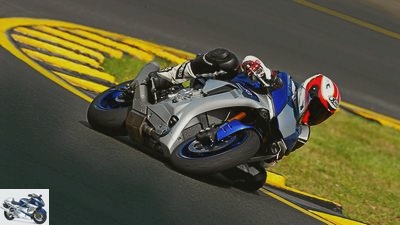
Yamaha




31 photos
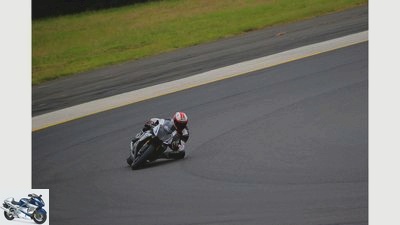
Yamaha
1/31
Yamaha YZF-R1 / R1M.

Yamaha
2/31
Yamaha YZF-R1 / R1M.
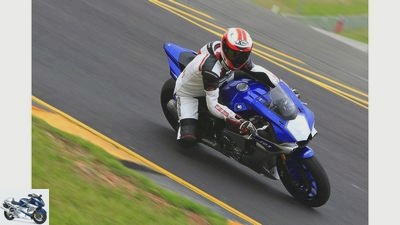
Yamaha
3/31
Yamaha YZF-R1 / R1M.

Yamaha
4/31
Yamaha YZF-R1 / R1M.
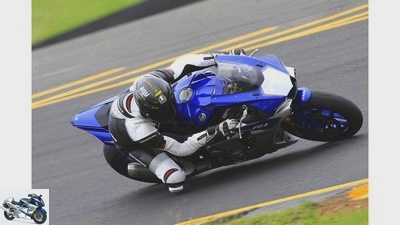
Yamaha
5/31
Yamaha YZF-R1 / R1M.
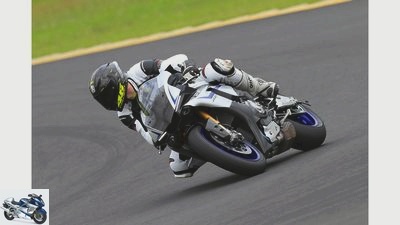
Yamaha
6/31
Yamaha YZF-R1 / R1M.
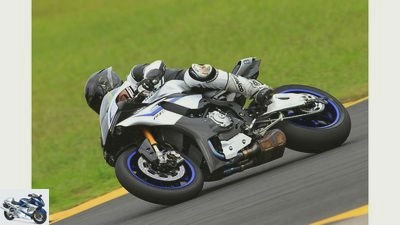
Yamaha
7/31
Yamaha YZF-R1 / R1M.
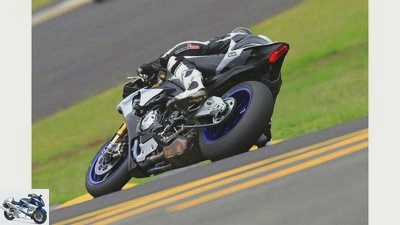
Yamaha
8/31
Yamaha YZF-R1 / R1M.
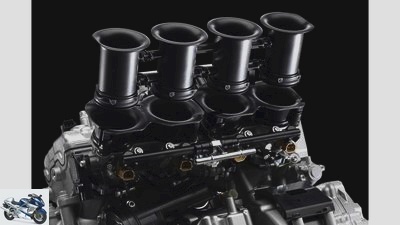
Yamaha
9/31
Yamaha YZF-R1 / R1M.
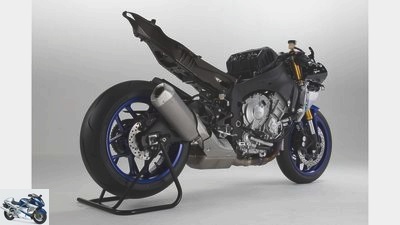
Yamaha
10/31
Yamaha YZF-R1 / R1M.
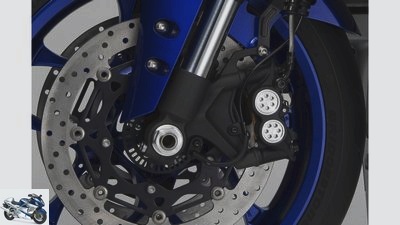
Yamaha
11/31
Yamaha YZF-R1 / R1M.
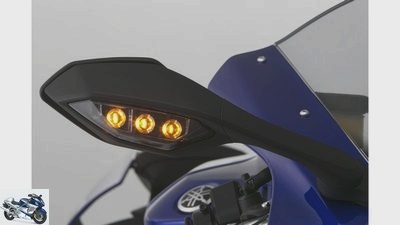
Yamaha
12/31
Yamaha YZF-R1 / R1M.
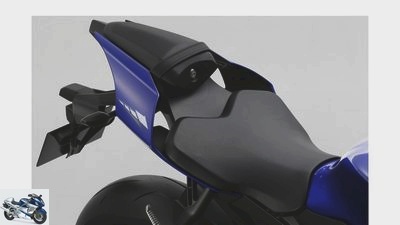
Yamaha
13/31
Yamaha YZF-R1 / R1M.
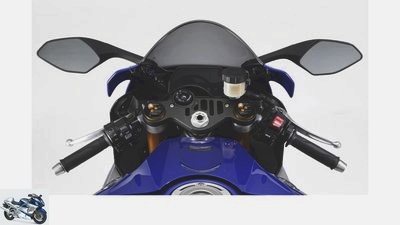
Yamaha
14/31
Yamaha YZF-R1 / R1M.
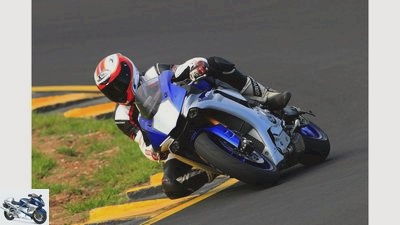
Yamaha
15/31
Yamaha YZF-R1 / R1M.

Yamaha
16/31
Yamaha YZF-R1 / R1M.
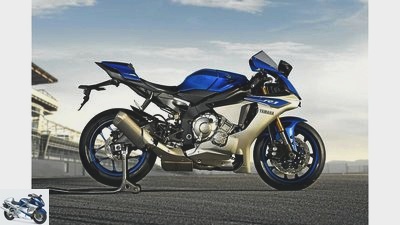
Yamaha
17/31
As compact as a racing machine, peppered with technical delicacies. Titanium and magnesium make the mouth watery.
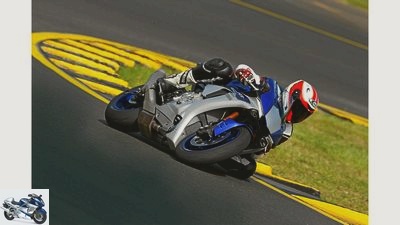
Yamaha
18/31
Chronicle of an impressive debut.
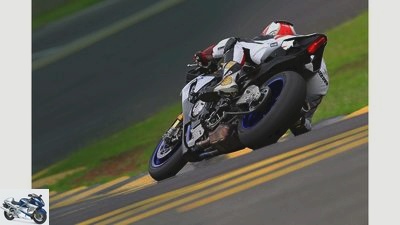
Yamaha
19/31
Yamaha YZF-R1 / R1M.

Yamaha
20/31
TFT display with extensive information as well as streets- …
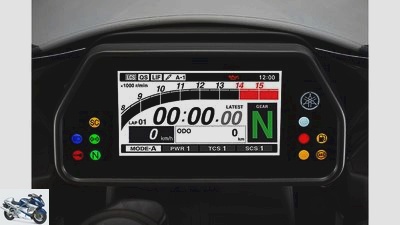
Yamaha
21/31
… and racetrack mode, in which the tachometer only starts at 8000 rpm.

Fig
22/31
Small setting wheel under the starter button for easy operation of the electronics menu.

Fig
23/31
As with the big ones: triple tree with openings for targeted flex – as with the MotoGP machines.
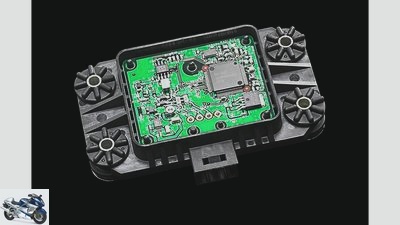
Yamaha
24/31
The Brain: compact six-axis measuring device for controlling the electronic driving aids.
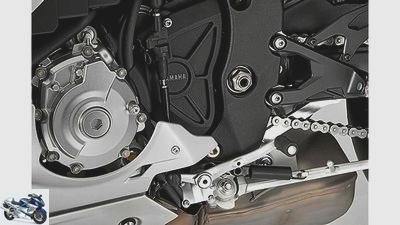
Yamaha
25/31
The automatic gearshift (upper arrow) is only designed for upshifting. Second inclusion of the shift linkage for reversed shift pattern.

Yamaha
26/31
Yamaha YZF-R1 / R1M.
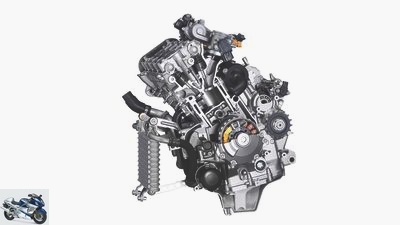
Yamaha
27/31
Valve actuation now via rocker arm …
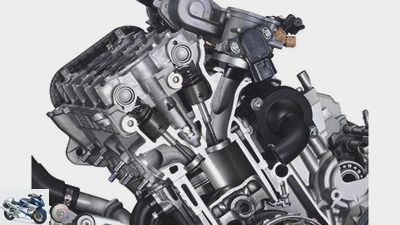
Yamaha
28/31
… The water cooler is compact, the oil cooler is quite large. Overall, the engine was 4.2 kilos lighter.
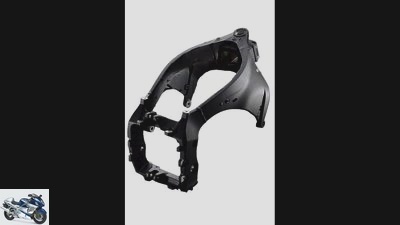
Yamaha
29/31
The layout of the frame with the massive front engine mounts is derived from the MotoGP machine M1.
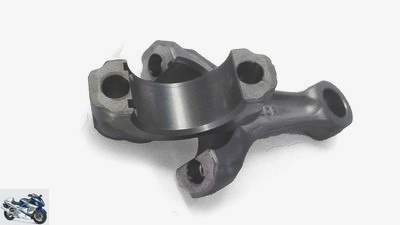
Fig
30/31
For the first time in a series machine, titanium connecting rods with cracked feet are used.
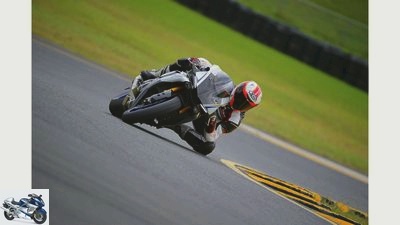
Yamaha
31/31
Yamaha YZF-R1 / R1M.
Yamaha YZF-R1 in the driving report
The Empire Strikes Back
In recent years, European manufacturers have set the tone for superbikes. Especially when it comes to electronics. Serious resistance from Japan has been a long time coming. It now comes in the form of the long awaited Yamaha YZF-R1.
Time and place had a certain symbolic power. While Yamaha presented the eagerly awaited Yamaha YZF-R1 at Sydney Motorsport Park, known as Eastern Creek, Australia, the new superbike season began at the same time on Phillip Island. The stage to which Yamaha is striving back with the R1. And with all his might. 199 kilos meet 200 hp, lightweight construction at its best, titanium and magnesium in almost wasteful abundance. In addition, the latest electronics, derived from MotoGP. So the full-bodied announcements. In the corporate headquarters in Munich, Noale and Bologna they should be sitting on red-hot coals as well as the impatient testers in the Eastern Creek pit lane.
Buy complete article

Yamaha YZF-R1 in the driving report
The Empire Strikes Back
Yamaha YZF-R1 weighs 199 kilograms – with a full tank
So what can the new Yamaha R1 do, which from its predecessor only has the in-line four-cylinder engine concept in common with the crossplane crankshaft? They started with the R1 engine in the R6 chassis, says Yamaha. And really: The Yamaha YZF-R1 looks extremely compact. Take a seat in the R1 saddle. The driver is greeted by a non-slip and crisp, firm cushion that is almost reminiscent of the foam rubber of a racing hump. The distance between the rests and the seat results in a very sporty knee angle. The hands reach for deeply lying stumps. One of Yamaha’s messages is to bring back dominance on the racetrack with the R1. Feels like it. And for this, the engineers pulled out all the stops in terms of performance, weight and electronics.
The Yamaha YZF-R1 should weigh just 199 kilograms – with a full tank. Practically every component has been made easier for this. The artfully welded 17 liter aluminum tank is said to weigh an unrivaled 2.1 kilos. Magnesium engine cover and oil pan save weight, as does the rear frame made from the same material. The LED lamps enable a smaller, lighter alternator and a lightweight 6.3 Ah battery. Titanium exhaust system, in MotoGP style now under the engine again, magnesium wheels, a festival for lightweight fetishists and sports freaks. The aluminum screws on the engine cover alone should save 250 grams. The magnesium wheels made in Japan even 870 – and thus inspire the handling accordingly.
All tests and articles about the Yamaha YZF-R1
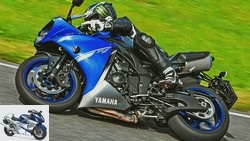
Super athlete
Zonko’s attack on the Yamaha YZF-R1
Too fat for this world
read more
Cut the line precisely like a scalpel
And always present: the MotoGP-Yamaha M1, which also served as the inspiration for the frame layout with the engine mounts placed far forward. For reasons of cost, neither an adjustable pivot point nor the backward rotating crankshaft found their way into series production. The wonderfully grumpy sound that only this crossplane row quad with the unconventional crank pin offset offers acoustically demonstrates the proximity to the MotoGP rocket.
But the Yamaha YZF-R1 doesn’t do that with a rude volume. It goes out onto the track with a dull roar. A tricky thing. At the end of the start – finish there is a terrifyingly fast left curve. Plus a wavy surface. Hanging curves, blind crests and a series of tight alternating curves. Hard fare.
But how the new Yamaha YZF-R1 unravels these curve sequences is awesome. Its maneuverability is far from that of its predecessor. Almost greedily, she rushes to the turning point, can be angled deeper and deeper with evenly little effort and thrown to the other side in a flash. Jagged like a pinball through the alternating curves. Big cinema. It cuts your lines precisely like a scalpel, and you can also use the brakes to draw a tight circle around the apex. Reacts intuitively to steering commands, changing the line selection in an inclined position? No problem.
No downshifting without a clutch
A superbike with the handling of a 600? Comes pretty close to that. Your maneuverability is a stunner. However: If the Yamaha YZF-R1 is torn aggressively with a lot of pull on the handlebars due to changing lean angles, it acknowledges such treatment every now and then with a strong twitching handlebar despite the steering damper.
When it comes to power, the Yamaha YZF-R1 is now also full of music. The short-stroke designed four-cylinder (bore / stroke 79 / 50.9 mm instead of 78 / 52.2 mm) initially comes across as almost unspectacular. But you shouldn’t be fooled by the deep, muffled sound and the linear power delivery: The thing pushes forward powerfully from medium speeds and turns light-footed with constant force, pulling relentlessly to the power peak at 13,500 / min (previously 12,500 / min) forward. Only at 14,500 rpm (previously: 13,500 rpm) does the limiter put an end to the romp. Whereby the shift light in the TFT display (Thin Film Transistor Display), which is bursting with information, should draw more attention to itself. When upshifting, thanks to the automatic gearshift, one gear is precisely aligned with the other. It does not allow downshifting without the clutch.
The engine has lost a total of 4.2 kilos
The Yamaha YZF-R1 is braked electronically at 299 km / h. During test drives in Japan without this shackle, however, 307 km / h were measured on the test track in Fukuroi. The potency of the engine and the aerodynamic qualities of the fairing appear to be fine. The four-cylinder hangs spontaneously and directly on the gas. Four power modes (PWR) are available. From gently appealing with reduced performance (4) to crisp and direct (1). In mode 1, the four-cylinder spontaneously depends on the gas, reacts very directly to gas commands, but also a bit hard, especially at lower speeds.
Larger valves (inlet 33, outlet 26.5 mm instead of 31/25 mm) and sharper camshafts with 0.6 (inlet) and 0.7 mm more lift ensure that enough mixture can always flood the CNC-milled combustion chambers. For valve actuation, Yamaha now relies on DLC-coated (diamond-like carbon) rocker arms instead of bucket tappets. As before, the valve clearance only needs to be checked every 40,000 km.
Variable intake funnels (YCC-I) release short intake paths at high speeds to promote performance. The inlet valves are made of titanium so that the rotating horrors do not end up in scrap metal. Likewise, the connecting rods, the first of their kind in series production with cracked feet. They weigh just 220 grams (previously: 338 grams) per piece. The technicians have also revised the oil supply for the 20 mm narrower crankshaft. The engine has lost 4.2 kilos in total. Compared to its somewhat chubby predecessor, the Yamaha YZF-R1 now looks well-trained, sinewy – an athlete with light. With first-class gripping brakes that can be finely dosed with just two fingers. Even when violently throwing anchors, the R1 only wobbles its buttocks a little, but stays neatly on track, not least thanks to the anti-hopping clutch.
The Yamaha R1 is more racer than ever
In addition to the engine and chassis, Yamaha has also gone to great lengths with the electronics. Because nowadays nothing works without it with superbikes. UBS, TCS, SCS, LIF, LCS, QSS, ERS. All right? Here in a nutshell what is hidden behind it:
A six-axis measuring system (Inertial Measurement Unit, IMU) records the acceleration and speed of the machine and thus its movement in all directions. Depending on the lean angle, it controls the Bosch ABS, which cannot be switched off, which also actuates the rear brake when the front brake is applied depending on the lean angle for better braking stability (Unified Brake System, UBS) and traction control (TCS). The sideways movement of the rear wheel, the drift, is recorded. This Slide Control System (SCS) was first used two years ago in MotoGP. Together with TCS, SCS watches over the rear wheel and intervenes in the engine control if the movements are too rapid or too large. This works extremely well in practice. The electronics regulate softly and sensitively. Drifts are gentle, and the electronics intervene confidently even on rough slides. This also applies to the Wheelie Control (LIF), which keeps the front wheel gently but firmly on the ground. A launch control (LCS) completes the electronic arsenal. These functions can be saved together with the power modes in three freely configurable driving modes. Sounds more complicated than it is, because in practice it is operated quite logically using the adjusting wheel on the right and the rocker switch on the left handlebar.
The new Yamaha YZF-R1 is a huge step forward in terms of sportiness. She is more of a racer than ever. It remains to be seen whether this required major concessions to suitability for everyday use. The first appearance on the racetrack clearly shows that the R1 is back. And it has what it takes to upset the hierarchy among superbikes.
Technical data: Yamaha YZF-R1 (YZF-R1M)




31 photos
Pictures: Yamaha YZF-R1 in the driving report
To home page
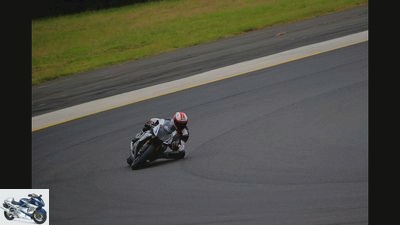
Yamaha
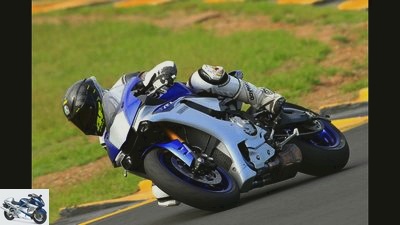
Yamaha
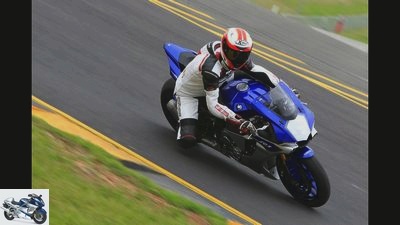
Yamaha

Yamaha
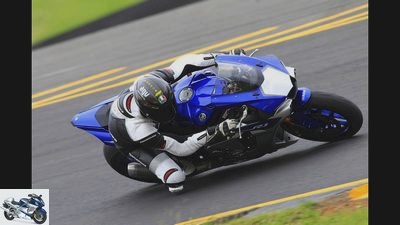
Yamaha
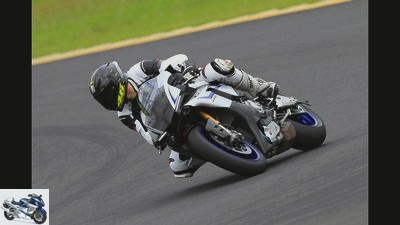
Yamaha
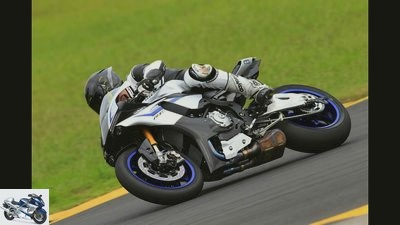
Yamaha
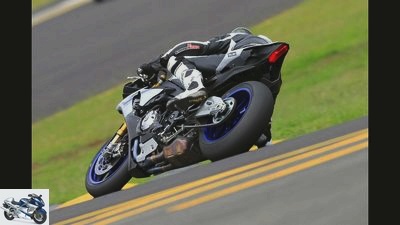
Yamaha

Yamaha
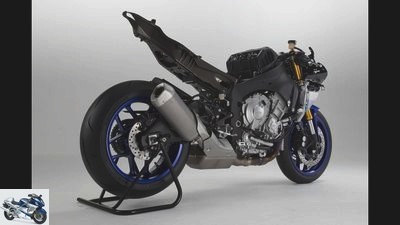
Yamaha
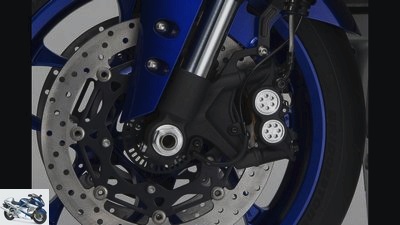
Yamaha
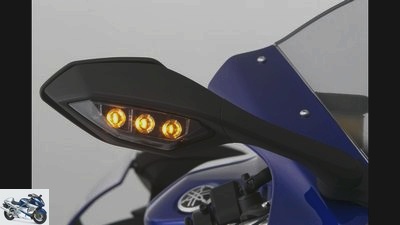
Yamaha
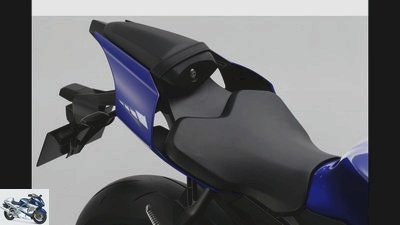
Yamaha
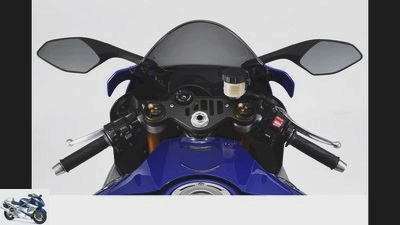
Yamaha
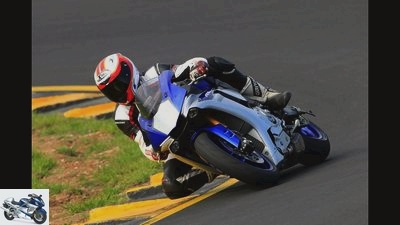
Yamaha
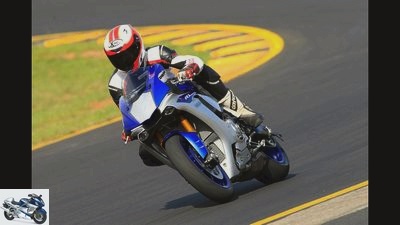
Yamaha
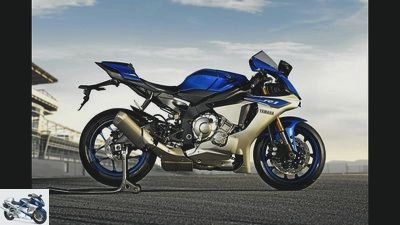
Yamaha
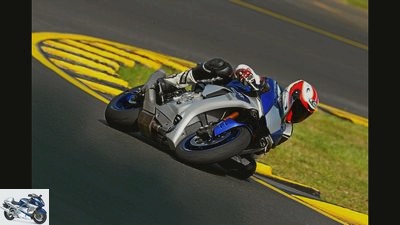
Yamaha
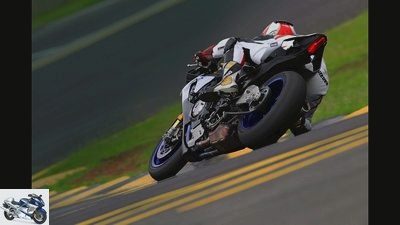
Yamaha
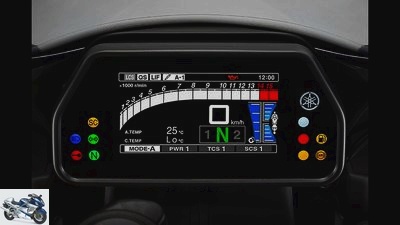
Yamaha
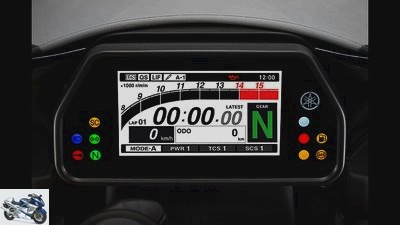
Yamaha

Fig
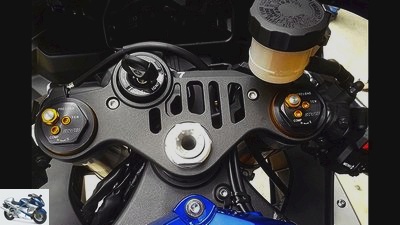
Fig
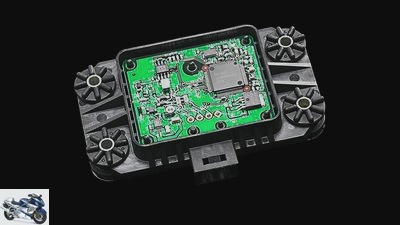
Yamaha
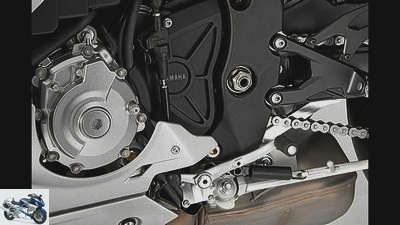
Yamaha

Yamaha

Yamaha
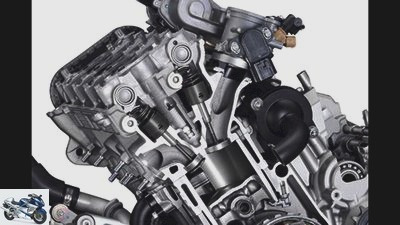
Yamaha
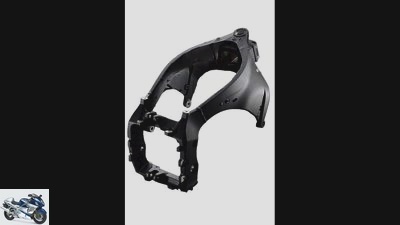
Yamaha

Fig

Yamaha
Related articles
-
Driving report MotoGP-Honda RC 211 V
Rudolph Driving report MotoGP-Honda RC 211 V (2005) Driving force Beat by Yamaha in MotoGP? is the Honda racing department in crisis? No. MOTORRAD let…
-
TunerGP 2015 – Yamaha YZF-R1 from Gilles and Klein in comparison
markus-jahn.com 23 photos markus-jahn.com 1/23 Gilles-Yamaha YZF-R1 GT and the Yamaha-Klein YZF-R1. fact 2/23 Small Yamaha YZF-R1. fact 3/23 Small Yamaha…
-
Driving report Yamaha WR 400 F
Driving report Yamaha WR 400 F Light and cross With the WR 400 F, which is derived from the new Moto Cross model YZ 400 F, Yamaha wants to revolutionize…
-
Aprilia RSV4 RF (2017) in the driving report
Photo: Aprilia 22nd photos 1/22 On the track, Aprilia’s RSV4 superbike weapon is a force to be reckoned with. The revised RF version goes one better with…
-
Comparison test BMW S 1000 RR, Ducati 1299 Panigale S and Yamaha YZF-R1
fact 46 photos fact 1/46 Yamaha YZF-R1. fact 2/46 BMW S 1000 RR. fact 3/46 The swing arm takes the wheel axle very far back – good for driving stability….
-
First driving report of the Kawasaki GPZ 900 R (MOTORRAD 1-1984)
archive 26th photos archive 1/26 The formula for the Kawasaki superbike of the 1980s, the GP Z 900 R, was light, strong and fast. archive 2/26 According…
-
Zonko’s attack on the Yamaha YZF-R1
andreasriedmann.at 21 images andreasriedmann.at 1/21 andreasriedmann.at 2/21 andreasriedmann.at 3/21 andreasriedmann.at 4/21 andreasriedmann.at 5/21 …
-
Yamaha YZF-R6 in the PS driving report
Yamaha 17 pictures Yamaha 1/17 Yamaha YZF-R6 in the driving report. Yamaha 2/17 Optically, the new R6 was based heavily on the Superbike YZF-R1. Characteristic …
-
fact 27 pictures fact 1/27 After six years, Yamaha has completely redesigned the sporty top model. The new YZF-R1 now has a completely …
-
KTM 1290 Super Duke GT in the PS driving report
KTM 13 photos KTM 1/13 KTM 1290 Super Duke GT. KTM 2/13 KTM 1290 Super Duke GT. KTM 3/13 The right fork leg (red plug on top) houses the spring travel…